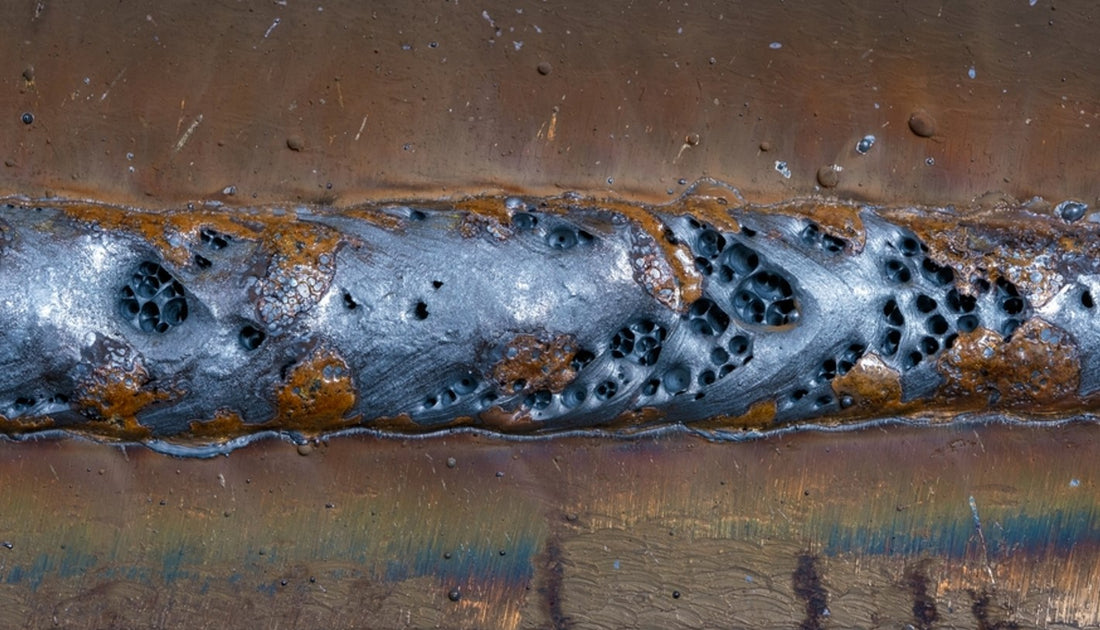Exactly how to Determine What is Porosity in Welding and Improve Your Technique
Exactly how to Determine What is Porosity in Welding and Improve Your Technique
Blog Article
Understanding Porosity in Welding: Discovering Reasons, Effects, and Avoidance Methods
Porosity in welding is a consistent difficulty that can substantially influence the top quality and integrity of welds. As specialists in the welding industry are aware, comprehending the causes, effects, and avoidance strategies connected to porosity is vital for accomplishing robust and reputable welds. By diving into the origin triggers of porosity, analyzing its destructive results on weld high quality, and exploring reliable prevention strategies, welders can enhance their expertise and abilities to generate top notch welds continually. The detailed interaction of variables adding to porosity calls for an extensive understanding and an aggressive technique to make certain successful welding results.
Usual Reasons of Porosity
Porosity in welding is mostly triggered by a mix of aspects such as contamination, improper securing, and insufficient gas coverage throughout the welding procedure. Contamination, in the form of dust, grease, or rust on the welding surface area, creates gas pockets when heated up, resulting in porosity in the weld. Inappropriate shielding happens when the protecting gas, frequently utilized in processes like MIG and TIG welding, is not able to totally secure the molten weld pool from reacting with the surrounding air, leading to gas entrapment and subsequent porosity. Additionally, inadequate gas protection, usually because of incorrect circulation prices or nozzle positioning, can leave components of the weld unprotected, enabling porosity to form. These variables jointly add to the development of voids within the weld, compromising its integrity and potentially creating structural concerns. Comprehending and dealing with these common reasons are crucial steps in stopping porosity and ensuring the high quality and strength of bonded joints.
Results on Weld Quality
The existence of porosity in a weld can considerably endanger the overall top quality and stability of the bonded joint. Porosity within a weld produces voids or tooth cavities that weaken the framework, making it a lot more at risk to breaking, rust, and mechanical failure.
Moreover, porosity can prevent the performance of non-destructive testing (NDT) techniques, making it challenging to discover other defects or stoppages within the weld. This can lead to significant safety concerns, specifically in essential applications where the structural integrity of the welded elements is vital.

Prevention Techniques Overview
Given the detrimental influence of porosity on weld top quality, reliable prevention techniques are critical to keeping the structural honesty of welded joints. In addition, choosing the ideal welding parameters, such as voltage, present, and travel speed, can help minimize the danger of porosity formation. By incorporating these prevention strategies right into welding techniques, this website the incident of porosity can be substantially minimized, leading to more powerful and more trustworthy welded joints.
Significance of Correct Protecting
Proper shielding in welding plays a critical duty in preventing atmospheric contamination and guaranteeing the honesty of bonded joints. Securing gases, such as argon, helium, or a mixture of both, are generally utilized to secure the weld pool from reacting with components airborne like oxygen and nitrogen. When these responsive elements come right into contact with the warm weld pool, they can trigger porosity, bring about weak welds with decreased mechanical buildings.

Poor securing can cause different defects like porosity, spatter, and oxidation, endangering the structural stability of the welded joint. For that reason, adhering to proper securing methods is necessary to generate premium welds with marginal issues and make certain the longevity and reliability of the bonded elements (What is Porosity).
Surveillance and Control Techniques
Exactly how can welders properly keep track of and regulate the welding process to make sure optimum outcomes and protect against issues like porosity? One secret method is with using sophisticated monitoring innovations. These can consist of real-time tracking systems that give comments on parameters such as voltage, present, take a trip rate, and gas flow rates. By continually keeping an eye on these variables, welders can identify deviations from the excellent conditions and make immediate changes to Check Out Your URL avoid porosity formation.

In addition, applying appropriate training programs for welders is vital for monitoring and managing the welding procedure successfully. What is Porosity. Informing welders on the importance of keeping consistent specifications, such as correct gas protecting and travel speed, can aid prevent porosity problems. Normal evaluations and qualifications can additionally ensure that welders are skilled in monitoring and controlling welding processes
Moreover, using automated welding systems can improve monitoring and control abilities. These systems can exactly control welding criteria, minimizing the probability of human error and making certain consistent weld top quality. By combining innovative monitoring innovations, training Visit Your URL programs, and automated systems, welders can efficiently keep an eye on and manage the welding procedure to reduce porosity flaws and attain high-grade welds.
Conclusion

Report this page